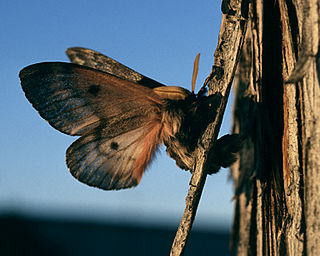
Coloradia is a genus of moths of the family Saturniidae. There are nine described species found in Mexico and eastern North America. The genus was first described by C. A. Blake in 1863.
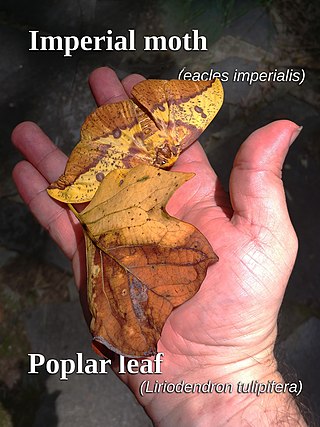
Eacles is a genus of moths in the family Saturniidae. They are native to the Americas. The genus was erected by Jacob Hübner in 1819.

Saturnia is a genus of moths in the family Saturniidae first described by Franz Paula von Schrank in 1802. They are large moths, commonly called emperor moths though this is also used for various close relatives in subfamily Saturniinae. Most are Palearctic, but three species occur in the chaparral of California.

Actias sinensis, the Golden moon moth, is a moth of the Family Saturniidae. It is found in China, Taiwan, Vietnam, Myanmar, India and Thailand. The species was first described by Francis Walker in 1855.

Caligula is a genus of moths of the family Saturniidae. It is primarily an Oriental genus, found in India, China and Southeast Asia. The genus is often treated as a synonym of Rinaca. It is named after Roman emperor Caligula.

The Saturniinae or saturniines are a subfamily of the family Saturniidae. They are commonly known as emperor moths or wild silk moths. They are easily spotted by the eyespots on the upper surface of their wings. Some exhibit realistic eye-like markings, whilst others have adapted the eyespots to form crescent moon or angular shapes or have lost their wing scales to create transparent windows. They are medium to very large moths, with adult wingspans ranging from 7.5 to 15 cm, in some cases even more. They consist of some of the largest sized Lepidoptera, such as the luna moth, atlas moth, and many more. The Saturniinae is an important source of wild silk and human food in many different cultures.

Callambulyx is a genus of moths in the family Sphingidae first described by Walter Rothschild and Karl Jordan in 1903.
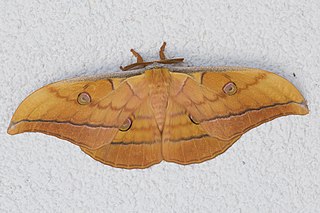
Antheraea is a moth genus belonging to the family Saturniidae. The genus was erected by Jacob Hübner in 1819. Several species of this genus have caterpillars which produce wild silk of commercial importance. Commonly called "tussar silk", the moths are named tussar moths after the fabric.
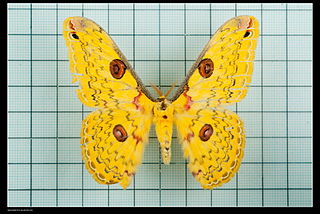
Loepa is a genus of moths in the family Saturniidae.

Lemaireia is a genus of moths from the family Saturniidae, commonly known as moon moths.
Rachesa is a genus of moths in the family Saturniidae first described by Charles Duncan Michener in 1949.
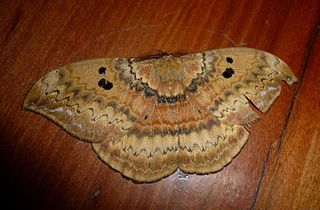
Janiodes is a genus of moths in the family Saturniidae first described by Karl Jordan in 1924.
Hirpida is a genus of moths in the family Saturniidae first described by Max Wilhelm Karl Draudt in 1929.

Rinaca is a genus of moths in the family Saturniidae erected by Frederic Moore in 1862. It is often treated as a subgenus of Saturnia.

Cricula is a genus of moths in the family Saturniidae first described by Francis Walker in 1855.

Syntherata is a genus of moths in the family Saturniidae first described by Peter Maassen in 1873.

Loepa formosensis is a species of moth in the family Saturniidae. It is found in Taiwan.
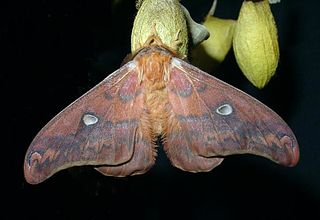
Rhodinia fugax, the squeaking silkmoth, is a moth in the family Saturniidae. It was described by Arthur Gardiner Butler in 1877. It is native to Korea, Japan, China, and the Russian Far East.















